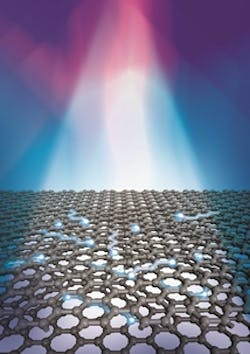Scientists create faster, more sensitive infrared photodetector
Researchers at the Center for Nanophysics and Advanced Materials of the University of Maryland (UMD; College Park, MD, USA) have developed a new type of infrared detector that could potentially be used in airport body scanners.
The UMD researchers, led by Research Associate Jun Yan and Professors Michael Fuhrer and Dennis Drew, developed the bolometer using bilayer graphene -- two atomic-thickness sheets of carbon.
Due to graphene’s unique properties, the bolometer is expected to be sensitive to a very broad range of light energies, ranging from terahertz frequencies or submillimeter waves through the infrared to visible light.
The researchers found that their bilayer graphene hot electron bolometer operating at a temperature of 5 Kelvin had comparable sensitivity to existing bolometers operating at similar temperatures, but was more than a thousand times faster.
Some challenges remain. The bilayer graphene bolometer has a higher electrical resistance than similar devices using other materials which may make it difficult to use at high frequencies. Additionally, bilayer graphene absorbs only a few percent of incident light.
But the Maryland researchers are working on ways to overcome these difficulties with new device designs, and are confident that a graphene has a bright future as a photodetecting material.
More information on the bolometer can be found here.
-- by Dave Wilson, Senior Editor, Vision Systems Design
